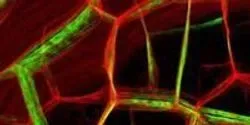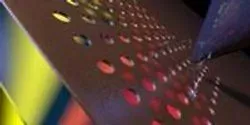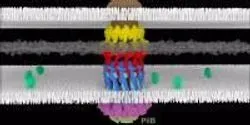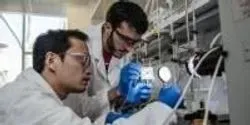All by California Institute of Technology
Filter by
AllArticlesAudioEbooksEventsInfographicsNewsProductsSurveysDocumentsVideosVirtual EventsWebinars
Acknowledging not only the growing need among scientists and engineers for resources that can help them handle, explore, and analyze big data, but also the complementary strengths of Caltech's Center for Data-Driven Discovery (CD3) and JPL's Center for Data Science and Technology (CDST), the two centers have formally joined forces, creating the Joint Initiative on Data Science and Technology.

Neural prosthetic devices implanted in the brain's movement center, the motor cortex, can allow patients with amputations or paralysis to control the movement of a robotic limb—one that can be either connected to or separate from the patient's own limb. However, current neuroprosthetics produce motion that is delayed and jerky—not the smooth and seemingly automatic gestures associated with natural movement. Now, by implanting neuroprosthetics in a part of the brain that controls not the movement directly but rather our intent to move, Caltech researchers have developed a way to produce more natural and fluid motions.

A fruit fly starts buzzing around food at a picnic, so you wave your hand over the insect and shoo it away. But when the insect flees the scene, is it doing so because it is actually afraid? Using fruit flies to study the basic components of emotion, a new Caltech study reports that a fly's response to a shadowy overhead stimulus might be analogous to a negative emotional state such as fear—a finding that could one day help us understand the neural circuitry involved in human emotion.

Light can come in many frequencies, only a small fraction of which can be seen by humans. Between the invisible low-frequency radio waves used by cell phones and the high frequencies associated with infrared light lies a fairly wide swath of the electromagnetic spectrum occupied by what are called terahertz, or sometimes submillimeter, waves. Exploitation of these waves could lead to many new applications in fields ranging from medical imaging to astronomy, but terahertz waves have proven tricky to produce and study in the laboratory. Now, Caltech chemists have created a device that generates and detects terahertz waves over a wide spectral range with extreme precision, allowing it to be used as an unparalleled tool for measuring terahertz waves.

As solar panels become less expensive and capable of generating more power, solar energy is becoming a more commercially viable alternative source of electricity. However, the photovoltaic cells now used to turn sunlight into electricity can only absorb and use a small fraction of that light, and that means a significant amount of solar energy goes untapped.

The rapidly melting ice sheets on the coast of West Antarctica are a potential major contributor to rising ocean levels worldwide. Although warm water near the coast is thought to be the main factor causing the ice to melt, the process by which this water ends up near the cold continent is not well understood.

Imagine a balloon that could float without using any lighter-than-air gas. Instead, it could simply have all of its air sucked out while maintaining its filled shape. Such a vacuum balloon, which could help ease the world's current shortage of helium, can only be made if a new material existed that was strong enough to sustain the pressure generated by forcing out all that air while still being lightweight and flexible.
















